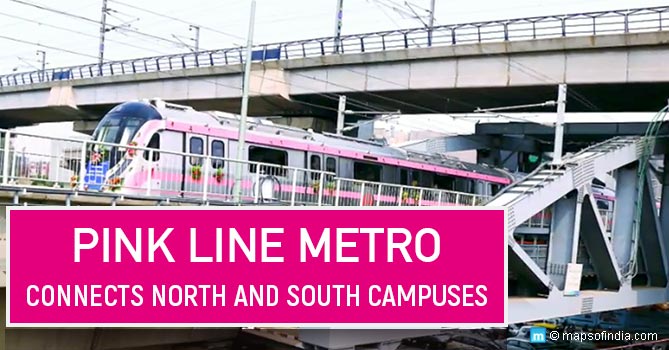With Pink Line metro becoming operational, Delhi Metro Rail Corporation has come a long way since the then Prime Minister Atal Bihari Vajpayee inaugurated the first metro line in 2002. Delhi Metro has become part of every Delhiites lifestyle, as with the fast expansion of metro, connectivity has improved significantly even in the remotest corners of Delhi. People can commute easily from one place to another without worrying about the traffic or rising prices of petrol and diesel. Delhi Metro is set to expand further, with few more lines of Delhi Metro Phase 3 to be operational by the end of year, while the Phase 4 is stuck between government logjam.
The Delhi Chief Minister Arvind Kejriwal and Union Minister for Housing and Urban Affair(Independent Charge) inaugurated the Pink Line metro of Delhi Metro, the newly constructed 21.56 km-long metro line will be functional from Majlis Park to Durgabai Deshmukh South Campus. The Pink Line Metro will connect the North and South Campuses of Delhi University.
The Pink Line metro is set to make the college going students happy, as the new Delhi Metro corridor will allow students from both the campuses of Delhi University to commute from North Campus to South Campus in 40 minutes time.
The current operational stretch of 21.56 km of Pink Line metro, will currently run through 12 metro stations from Majlis Park in the north of Delhi to Durgabai Deshmukh South Campus metro station in the south. The remaining portion of the 59 km-long stretch will become operational from June 2018.
Pink Line Metro becomes the second line of Delhi Metro Phase 3 to be operational, with Magenta Line becoming operational in December last year. With the latest addition of 21.56 km, now Delhi Metro’s operational network has expanded to 252 km, connecting almost every part of NCR region, with new lines expected to be operational soon.
The Pink Line has three interchange metro stations, with Azadpur Station on the Yellow Line, Netaji Subhash Place on the Red Line, and Rajouri garden on the Blue Line, allowing passengers traveling on these lines to interchange for their preferred destination on these lines to ease their commute.
Delhi Metro has become an icon of Delhi, as millions of daily commuters use the services of DMRC to commute for work, to colleges, to visit places in Delhi, and for various other traveling purposes. Delhi Metro is one of profit-earning subway system running in the world without any government subsidy for financial stability. With the planned expansion Delhi Metro system will become one of the best subway system in the world, with it’s daily footfall set to increase even further.






